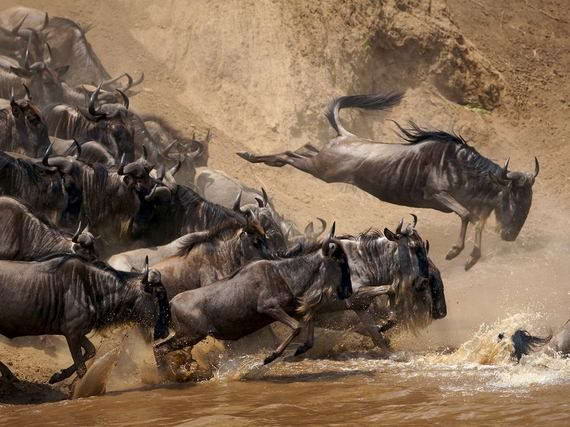

But even in the off years, a few Snowy Owls still push into the northern U.S. Similar - if not quite as epic - owl irruptions occur roughly every 3 to 5 years. Serious birders still swoon when they think back on the winter of 2013-2014, when thousands of Snowy Owls irrupted into the lower 48, turning up as far south as Florida and the Bahamas. Females are more subdued, but have a fantastic, green-colored beak. Flocks are common at feeders, where you can get an up-close look at their gaudy coloration: Males are an eye-popping yellow, with black swings, and a bold eyebrow. Like the crossbills, these finches of the northern conifer forests often “irrupt” father south into the continental U.S. Garish, unmistakable, and awesome - meet the Evening Grosbeak. Be careful not to confuse them with the similar-looking Cedar Waxwing: Bohemians have red and yellow wingtips, a dark black chin, rust-colored feathers under the tail, and a more greyish coloration. Named after gypsies, Bohemian Waxwings roam large distances in winter to search for berries, other fruit, and insects.
Bohemian Waxwing Photo © Bohemian Waxwing breeds in northwestern Canada, occasionally erupts down into the northern U.S., mostly in the west. Meanwhile, the Snow Goose has a larger, chunkier bill with a dark line, or “grin patch” near the gape. The species are difficult to tell apart unless they’re sitting side by side: The Ross’s Goose is smaller and more delicate, with a shorter neck. They breed on the Arctic coasts and winter in just a few spots in the U.S., where you can find them in flocks together anywhere other winter waterfowl and geese congregate, including open lakes and agricultural fields. Both species are snowy white, with black wing tips and pink beaks. Stop and take a closer look the next time you pass a lake brimming with Canada Geese - hidden among them might be a few Ross’s Geese or Snow Geese. Ross’s & Snow Geese Photo © Howard Ignatius / Flickr. The “longspur” in this species’ name comes from an elongated claw on the hind toe. Females are much more tricky to identify, with brown, streaky, sparrow-like plumage. Males are distinctive, with jet-black masks, reddish necks, and a yellow eye stripe. Like the Snow Bunting, Lapland Longspurs breed high in the Arctic and then winter in large flocks, some as many as 4 million strong, in the open fields of the northern U.S. Lapland Longspur Photo © Alaska Region US Fish & Wildlife / Flickr. Males wear off the brown-colored feather tips by rubbing themselves against the snow, resulting in pure-black coloration by the time the breeding seasons starts. After their late summer molt, the plumage on their back and wings is brownish-black. Male Snow Buntings have to put in a bit of work to achieve their striking black-and-white breeding plumage. Their winter range extends to the northern half of the U.S., where they’re often seen foraging in flocks in snowy winter fields. The subtly beautiful, sparrow-sized Snow Bunting breeds on the high Arctic tundra, where they nest in rock crevices lined with feathers, fur, grass, and moss. Snow Bunting Photo © Kelly Colgan Azar / Flickr. But be careful - juvenile goshawks look similar to Coopers and Sharp-Shinned hawks. Adults are distinctive, with heavily barred chests, steel grey back and wings, and deep red eyes. They’re found year-round throughout the Rockies, and throughout the mid to northern U.S. The largest North American accipiter, these powerful, elusive hawks hunt rabbits, hares, squirrels, and other large birds in dense forests, zipping through the trees at high speeds. Photo © Bruce Taubertįew Northern American raptor species are as likely to initiate a tick-the-bird-or-die-trying twitch like the Northern Goshawk. 

Northern Goshawk Northern Goshawk are used as an indicator species since they are at the top of the food chain.Listen closely if you happen upon a flock of Red Crossbills - the species has 10 distinct call-types, and different sub-populations specialize on different types of conifers. You can tell them apart by the white dappling on the wings (called wing bars), on the White-Winged Crossbill.īoth species are found year-round throughout the Rockies, and throughout the mid to northern U.S.

Males of both species are a brilliant scarlet, while the females are olive green. Red & White-winged Crossbills Photo © Red Crossbills and White-Winged Crossbills is one challenge - the second is getting close enough to actually to see their twisted bills, which they use to prize seeds out of pine cones.








 0 kommentar(er)
0 kommentar(er)
